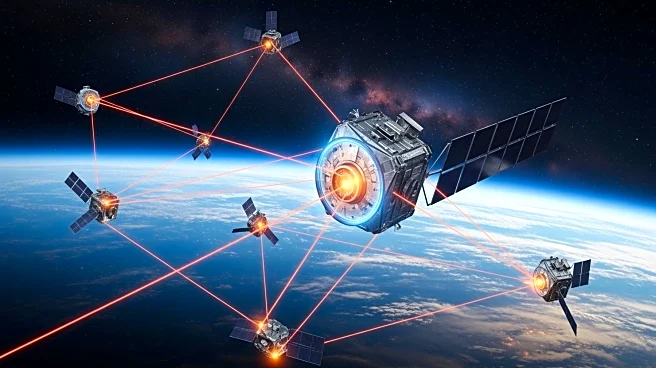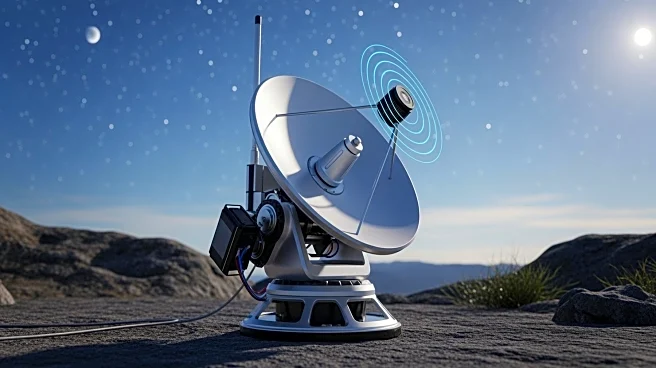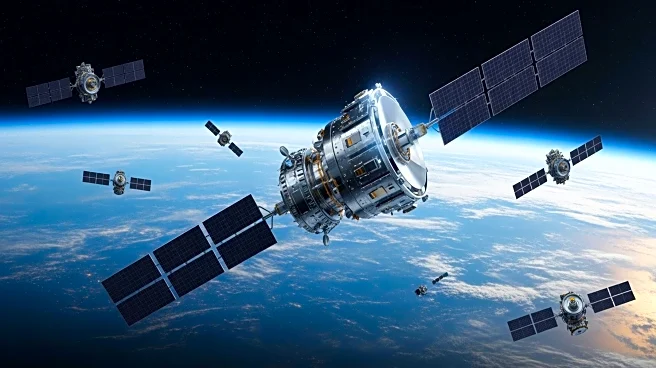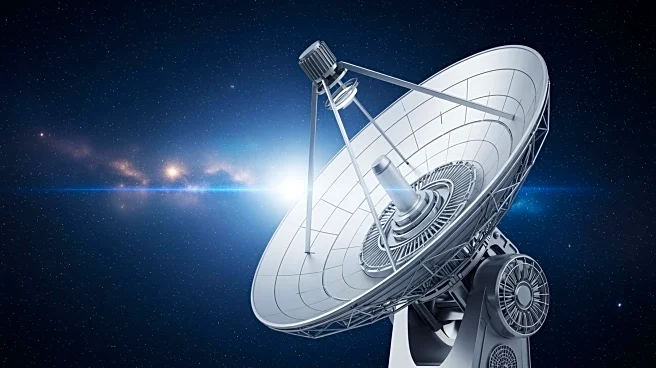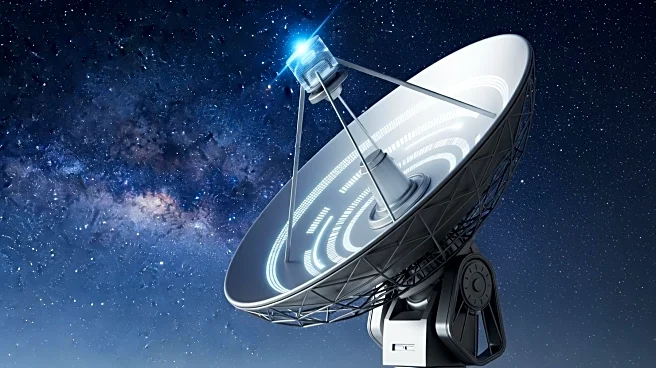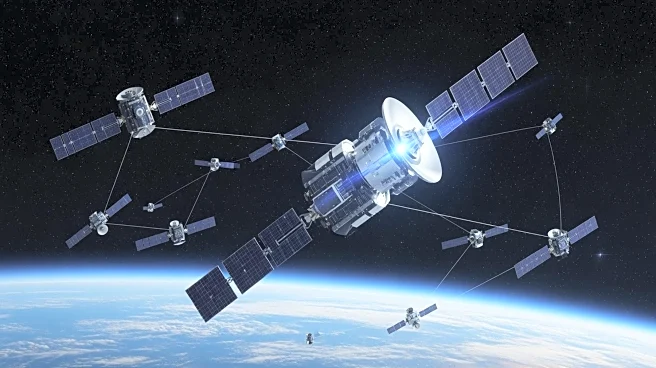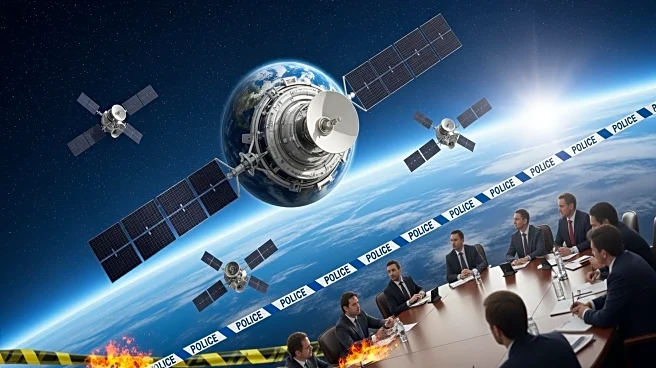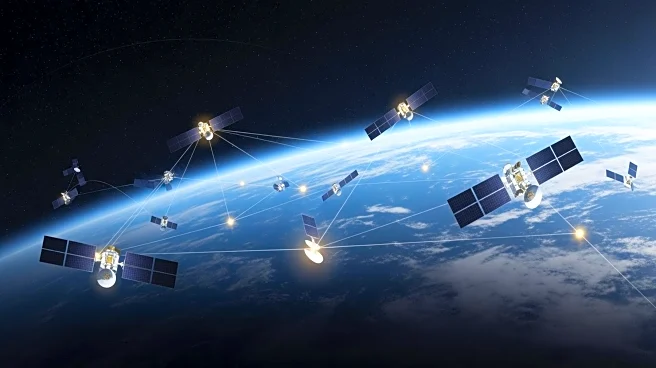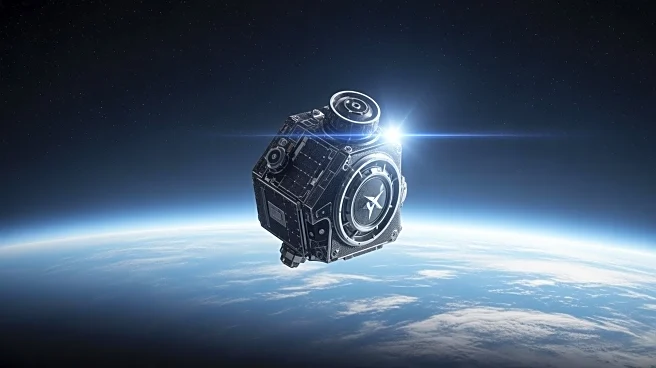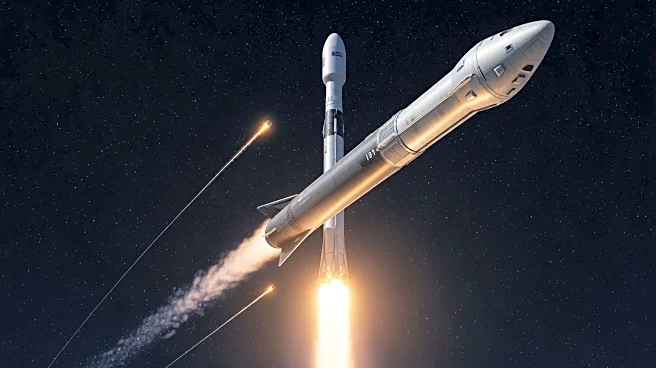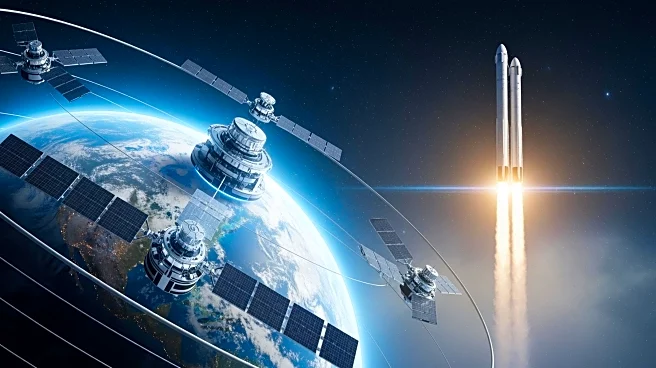What's Happening?
Muon Space has announced a partnership with SpaceX to integrate Starlink's mini-laser terminals into its Halo satellite platform by 2027. This collaboration will enable Muon's satellites to connect with Starlink's global network, providing customers with near-real-time
access to satellite data. The integration is expected to significantly increase data downlink rates, allowing Muon satellites to transmit data at speeds of 25 Gbps over distances up to 4,000 km. This advancement will enhance the capabilities of Muon's remote sensing payloads, allowing for faster and more comprehensive data collection.
Why It's Important?
The partnership between Muon Space and SpaceX represents a major leap in satellite data transmission technology. By leveraging Starlink's laser network, Muon Space can offer its customers faster access to data, which is crucial for applications such as environmental monitoring, disaster response, and scientific research. The increased data transmission rates will allow Muon to expand the range of services it provides, potentially attracting new customers and driving growth in the satellite industry. This development also highlights the growing importance of collaboration between satellite operators and global networks like Starlink to enhance data accessibility and operational efficiency.
What's Next?
Muon Space plans to launch its first Starlink-enabled satellite in 2027, marking a significant milestone in its efforts to improve satellite data transmission. As the integration progresses, Muon may explore additional partnerships and technological innovations to further enhance its satellite capabilities. The success of this collaboration could influence other satellite operators to seek similar partnerships with global networks, potentially leading to a broader transformation in the satellite industry. Stakeholders, including government agencies and private companies, may closely monitor the outcomes of this integration to assess its impact on data accessibility and operational efficiency.
Beyond the Headlines
The integration of Starlink's laser network into Muon's satellites could have broader implications for the satellite industry, including ethical considerations related to data privacy and security. As data transmission rates increase, there may be concerns about the potential misuse of satellite data, necessitating the development of robust security measures and regulatory frameworks. Additionally, the enhanced capabilities of Muon's satellites could drive long-term shifts in how industries utilize satellite data, potentially leading to new business models and applications.
